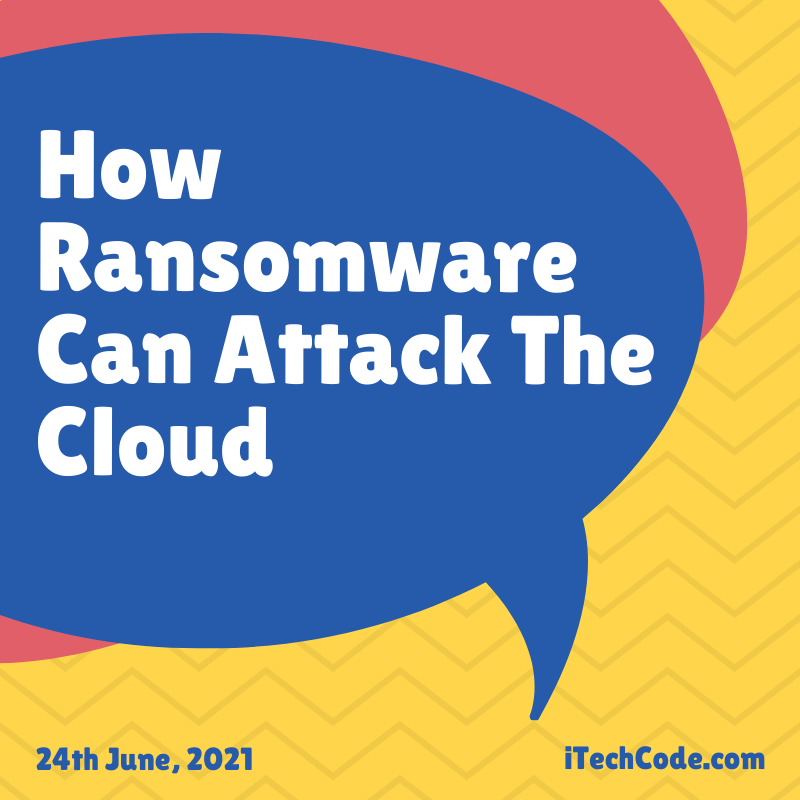Ransomware has now entered the mainstream and is a common threat to internet users. Over the last two or so decades you must have witnessed businesses, hospitals and schools, and city municipalities becoming a target of crypto-ransomware. Ransomware attacks are characterized by the systematic encryption of files. Once the files are encrypted, the cybercriminal asks the victim for ransom in exchange for the key to decrypt their files. It is always suggested to consult professional services in case of ransomware. However, there are mistakes, avoiding which you can prevent your cloud data from getting struck by ransomware.
Adapting To Cyberthreat
Today, we are cultivating innovative ways to adapt to this cyber threat both at the business level and at the individual level. Adapting to this threatscape means avoiding any setting or act that can make our systems vulnerable to cyberattacks. We are updating our computer operating systems, creating a backup of our data, and much more. These measures are no more only the lore of some IT professionals but it is the responsibility of every individual.
At the same time, technology advancements have driven down the cost of both data storage and high-speed internet service resulting in an environment that supports the sharing of important business functions such as online apps, email hosting, and file sharing to the cloud.
How Is Cloud Data Exposed To Ransomware?
Cloud syncing has now let businesses use its efficient tools for team management and online data storage. But, this has also let our data leave the protective bubble of our traditional network security tools and as a result, is exposed to ransomware in new ways.
When companies put services into the cloud, they often neglect them when architecting their backup and disaster recovery plans, mistakenly believing that “the cloud” is synonymous with “backup.” Aware of this mistake, cybercriminals are increasingly using ransomware to attack these vulnerable cloud services.
Three Ways Cloud Data Is Vulnerable To Ransomware
Ransomware Syncing To Cloud File Sharing Services
The first thing that leads to a ransomware attack is when it originates from a local device and then synced to the cloud. The files are encrypted to this compromised device and the corruption spreads to the cloud. This happening in a business domain causes the infection to spread to the whole-company cloud sharing system. Multiplying the damage by the number of computers on your network. Moreover, it can also affect the original version of the files, creating a situation going beyond their control. In such a scenario, it is better to disconnect from the internet immediately and get help from ransomware removal teams. Additionally, protect local devices with next-gen antivirus solutions that can defend against ransomware.
Ransomcloud Attacks
There are also ransomware attacks that target cloud services and don’t jump to the cloud by first infecting a local device. In such attacks, the attacker uses the technique of encrypting data through phishing emails and gains control of the other email accounts. He can then either expand or use the compromised email account to disperse more malware to the victim’s contacts.
To take preventive measures against such attacks white hat hackers test the system and network security by using their skills. They discover vulnerabilities before malicious hackers can detect and exploit them. Moreover, it is suggested to get a third-party backup and disaster recovery solution for your email and cloud services.
Ransomware Attacks On Your Cloud Service Provider
Ransomware can also affect businesses and individuals when the direct target of the attack is their cloud application provider. To avoid such cases, ask your service provider to provide an effective ransomware recovery plan and prioritize working with a company that is ready to tackle such unexpected disasters.
In a nutshell, it’s better to take preventive measures or professional help to tackle this monster of ransomware.

You can also stay updated by subscribing to iTechCode.